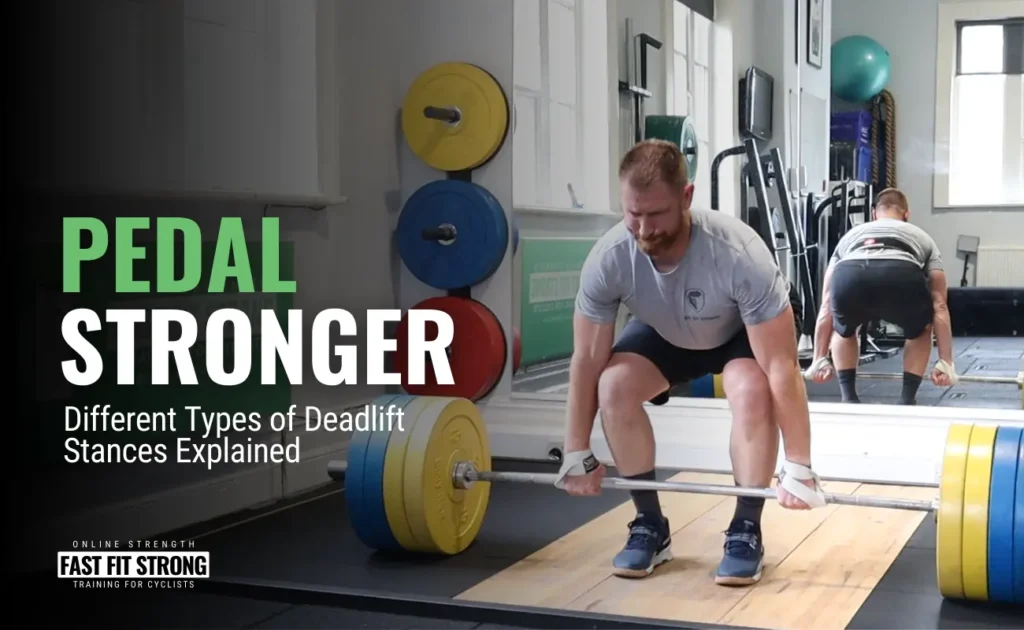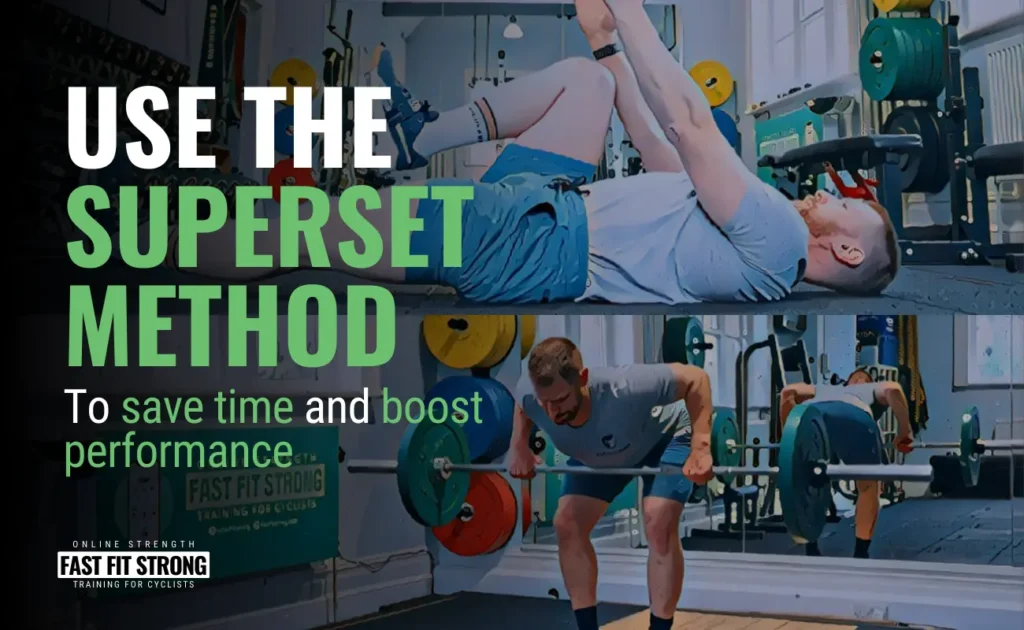Introduction
This is the first of a two-part series in which I will debunk many strength training myths and misconceptions around, especially when training for endurance sports like cycling, triathlon or marathon running.
Part 1 will cover the downright untrue strength training myths which put off many endurance athletes and enthusiasts, while part 2 will dispel the misconceptions and malpractices which can lead to injury and/or fail to enhance performance; thereby giving strength training a bad reputation.
Resistance training is such a broad and diverse activity; it’s not like there’s one way to do it! Strongmen, powerlifters, weightlifters, body-builders, military personnel, people simply looking to be fitter and healthier and virtually all athletes need to do some form of strength training, but how it’s performed and what it looks like will vary significantly depending on your individual goals, experience and injury history.
Deciding what to do, how and when to do it is as much an art as it is a science. The combination of differing implements (bars, dumbbells, bands, balls, chains), methods (concentric, eccentric, plyometric, ballistic) and training schemes (clusters, wave loading, ladders, etc) all add to its mystique. In addition to this, coaches and practitioners (often with a brand to promote, or product to sell) have muddied the waters by pushing their particular style of training, while bad-mouthing the rest.
Is it any wonder the average athlete doesn’t know what to think and is afraid to get started in the confusion of all the mixed messages?
When I’m presenting at an event, I always ask “who does any kind of off-bike training?” and usually there’s only a handful of people that put their hands up. This is despite the masses of evidence highlighting the benefits of lifting weights. When I ask a follow-up question to the ones who actually do something, it’s clear that things I consider to be basic knowledge aren’t getting through to people. I’m worried that these enlightened individuals won’t improve, or worse, hurt themselves and so will perpetuate many incorrect assumptions. So, without further ado, below are five strength training myths, and why they are flat-out wrong!
Myth #1: I don’t need to be strong
Over the years I’ve worked in many sporting environments and had to develop different physical characteristics for each one. From the all-over physical strength of an international tight-head prop, the raw explosiveness of an Olympic standard track sprint cyclist, to the sustained endurance needed to complete a road race, triathlon or ironman. During that time one thing has always been evident; the need for physical strength. That’s not to say I’d always train athletes the same, far from it, but it is clear that being strong is advantageous to everyone, no matter what they’re trying to achieve. So, I’d better be clear on what I mean when I say being “strong”.
What is strength?
Strength is defined as the ability to absorb or produce force and is therefore measured in Newtons, but there’s more to it than simply lifting heavy weights. The more you think about it, the more complicated it can become. It’s more than how much your muscle fibres can contract. In fact, it depends on the number, thickness, length and type of your muscle fibres. It’s influenced by other things like:
- The thickness and laxity of your tendons.
- How many muscle fibres you can activate at a time.
- How quickly they can contract (and then relax) them.
- Whether you can control the co-contraction of the opposing muscle (antagonist).
- Whether the right muscles are contracted at the right time in a given movement (intermuscular coordination).
- Limb length.
- Where and how the tendon joins to the bone.
- Joint mobility.
Lifting progressively heavier weights is a simple way of telling whether you are getting stronger, but given the complexity of everything involved, it doesn’t show the whole picture.
Why is being strong important?
For any given athlete, there are three main reasons why being stronger (and therefore strength-training) is important. I recently wrote an entire article on it, so if you’d like to know more and delve a little deeper, click here. Briefly, the three reasons are:
Improve Health
By far the most important reason you need to incorporate strength work into your weekly routine is for your overall health and wellbeing. The benefits of resistance training go far beyond building muscle, here are a few of the benefits strength training can provide:
- Bone mineral density – sustained endurance training reduces the hardness of your bones making them more brittle and easier to break.
- Metabolic rate – burn fat faster.
- Mobility and flexibility – moving through large ranges of movement improves the health of your joints.
- Mental health – setting goals and seeing the improvements you can make is amazing for your confidence and self-esteem.
Reduce Injury
One of the disadvantages of endurance sports is that it repeats the same cyclical movements over and over again. If you have even the smallest flaw in your technique, or (in the case of cycling for example) the movement places the stress on one area (say, quads), with less on another (hamstrings) you will develop imbalances. Exercising more will make the problem worse rather than fixing it. Strength training allows you to highlight these areas of imbalance and utilise specific exercises to loosen tight areas and strengthen weak ones.
Get Faster
Training with resistance leads to better communication between your brain and your muscles, meaning you are more likely to contract the right amount of muscle fibres, at the right time and in the right order. The muscles (and surrounding tissue) will then be able to transfer more force. Studies have shown that replacing some aerobic sessions with strength training leads to lower rates of exertion as well as higher power outputs after prolonged activity(12).
- Power output – Power = force x velocity (or torque x cadence in the case of cycling). Improved force, therefore, leads to improved power.
- Efficiency & coordination – Save energy by contracting the right muscles at the right time so you’re not fighting against yourself.
- Exercise economy – Producing more force means that the relative effort at the same absolute intensity decreases.
Myth #2: It makes you heavy
After meeting cyclists from all over the world, it’s clear that one thing above all others has prevented them from beginning any form of the strength-training program; and that’s the fear of putting on weight. This is understandable, especially if you consider the importance of power-to-mass ratios to cycling performance, as well as the influence of other weight-related factors like aerodynamic drag and rolling resistance. It’s also true that training with weights increases the size and number of muscle fibres, but when strength training is performed in conjunction with endurance training (termed concurrent training), it becomes incredibly difficult to increase body mass. In fact, studies have shown that combining strength with endurance training for up to 16 weeks didn’t increase body mass or negatively affect VO2max in a variety of endurance athletes including cyclists(13,15) and runners, duathletes and skiers. This could be because many of the strength-training adaptations, especially at the beginning, are neural and not muscular(9). The goals of strength training aren’t to put on weight, they’re to move better, correct imbalances and improve power. This may mean that you increase muscle mass in specific areas as a by-product of getting lifting weights and getting stronger (a study of elite cyclists found an increased thigh muscle mass but no increase in total body mass (11), but if you’re combining strength work with your endurance training, you’re not going to turn into Arnold Schwarzenegger any time soon!
Myth #3: It gets you injured
After the fear of putting on weight, the second most common excuse I’ve heard for not starting a strength-training program is the fear of getting injured. This is something I find particularly ironic because one of the main reasons I advocate strength-training for in the first place is to reduce the risk of injury(3,7). When you remove poor coaching practices, inappropriate exercise selection and ridiculous methods like CrossFit from the equation, resistance training itself is a very safe thing to do(8), however, it’s not a panacea and it’s difficult to prevent falling off and breaking your collar bone – accidents and injuries do still happen. But, it’s clear that once injured, being stronger will both minimise the severity of any given injury and allow athletes to recover quicker once injured.
Myth #4: It makes you slow
This one comes from the outdated stereotype of someone who goes to the gym as a slow, lumbering ape and derives from the misconception that strength-training equals bodybuilding. If it were true, why would the fastest athletes in the world utilise strength and power development as a core component of their training arsenal? As I described in the introduction, gym work is a diverse range of activities that can take many forms and has many, many variables. The style and type of training largely dictate the outcome; programming relevant exercises with large ranges of movement, with progressively and appropriately increasing loads, will lead to better joint health, improved neural drive and enhanced movement literacy. All of this means less stiff, more mobile athletes who can move freely and with better control. Going back to my favourite equation:
Power = Force Velocity
If the force is improved, then so is the power. The obvious question would likely be “why don’t I train for velocity then?”
Strength is more important
Various studies have shown that stronger athletes tend to be more powerful than weaker ones,(4,14) and being stronger provides a foundation for athletes to further improve if and when specific power-based training is introduced(2).
Strength is a continuum
Strength vs. Speed shouldn’t be seen as isolated activities. Heavy loads must be lifted slower and light loads can be moved faster but you can’t do either exclusively. If you’re moving a heavy load there must be some velocity and if you are moving quickly, there must be some load(10). So, even if you are competent enough to be able to safely lift large weights you’ll still be moving it with some velocity. Optimal loads for any given movement don’t exist(1,5), so training with a variety of loads across the spectrum is important for developing a broader strength base.
Intent is key
Regardless of the load lifted, what determines power seems to be the intent to move quickly, rather than actually moving fast(6). In other words, the intention to move an object explosively, even if the actual movement is slow (or even stationary) leads to specific neural adaptations that are required during powerful actions. This is ultimately what improves the economy and efficiency over a prolonged period (click here for more info).
Velocity training when weak is an injury risk
Training for velocity without the prerequisite level of strength is an inherent injury risk. Moving quickly, even if there’s no additional load, adds a layer of complexity to any given movement. Coordination and timing must be spot-on to protect joints during the exercise itself, as well as in the (often overlooked) catching or landing phases. Given that many cyclists and runners are novices when it comes to gym training, this is not a good idea. It’s wise therefore to first learn the movements so they can be performed consistently, safely and effectively. Once this has been achieved, lift a range of loads across the load/velocity spectrum to develop a range of strength abilities.
Myth #5: I don’t have time to get to the gym
This is probably the most irritating reason anyone gives for not incorporating strength training into their weekly program. It’s basically an excuse people give when they don’t WANT to do it because (as with everything else in here), the scientific studies clearly show that doing some strength work is time-efficient in the long run. As I’ve already mentioned, being stronger reduces the number of injuries an athlete will pick up and, once injured, will reduce the amount of time it takes to recover from them. Add all these time savings up over a year or more, then it’s not difficult to see that by lifting some weights you can actually increase the time on the bike, not reduce it. I believe the problem comes when athletes simply add strength work to an already packed training schedule. It’s akin to pushing all the sliders on a graphic equaliser to the top – it won’t produce a good sound. A much smarter approach would be to (gasp!!!) replace some endurance sessions with strength ones. Here’s the rationale…The potential window of adaptation to develop your aerobic characteristics are likely very small. That is, as an experienced endurance athlete, the work you need to do to improve aerobically will be very large. Whereas, as a gym novice, the amount of work you’ll need to do to develop will be very small (your window to adapt to strength work is large). You will get a much bigger bang for your buck. Greater gains in 2x 45-minute sessions vs 2x 2-hour bike rides (90-minutes vs 4-hours per week). As you become more experienced, your ability to adapt will diminish (you’ll have a smaller window). Here’s where strategic planning comes in. Do more work in the darker months where you’re not racing or outside less often, and do less during periods of competition. But still do some…during my time at British Cycling we suggested that the riders still complete at least one gym session every 7 to 10 days, even during the competitive season. This had many positive effects:
- The athletes didn’t lose their strength levels.
- They didn’t get the initial soreness after restarting gym work (meaning subsequent training wasn’t negatively affected).
- Injury rates dropped.
For these more experienced athletes, turning some sliders on the graphic equaliser up, and other ones down gave us the best of both worlds.
Putting it all together
Strength training is a necessary component in the training week of cyclists and other endurance athletes, but the frequency, volume, intensity and other variables must be manipulated to make sure sessions reflect the athletes’ stage of development, as well as the time of the season. Well designed programs will reduce the incidence of injury and improve performance without the threat of perceived negative consequences that many riders are fearful of. So, now that you’re sold on the concept and you need to get some lifting done; look out for part 2, where I discuss some of the misconceptions on the best methods to use (and what not to do), to get the biggest benefits from your training.
References
- Cormie, P and Flanagan, SP. Does an optimal load exist for power training? Strength Cond J 30: 67, 2008.
- Cormie, P, McGuigan, MR, and Newton, RU. Influence of strength on magnitude and mechanisms of adaptation to power training. Med Sci Sports Exerc 42: 1566–1581, 2010.
- Fleck, SJ and Falkel, JE. Value of resistance training for the reduction of sports injuries: Sports Med 3: 61–68, 1986.
- Haff, GG and Nimphius, S. Training principles for power. Strength Cond J 34: 2–12, 2012.
- Kawamori, N and Haff, GG. The optimal training load for the development of muscular power. J Strength Cond Res 18: 675–684, 2004.
- Kawamori, N and Newton, RU. Velocity specificity of resistance training: Actual movement velocity versus intention to move explosively. Strength Cond J 28: 86, 2006.
- Lauersen, JB, Andersen, TE, and Andersen, LB. Strength training as superior, dose-dependent and safe prevention of acute and overuse sports injuries: a systematic review, qualitative analysis and meta-analysis. Br J Sports Med 52: 1557–1563, 2018.
- Mazur, L j., Yetman, R j., and Risser, W l. Weight-training injuries: common injuries and preventative methods. Sports Med 16: 57–63, 1993.
- Mikkola, J, Rusko, H, Nummela, A, Pollari, T, and Hakkinen, K. Concurrent endurance and explosive type strength training improves neuromuscular and anaerobic characteristics in young distance runners. Int J Sports Med 28: 602–611, 2007.
- Newton, RU and Dugan, E. Application of strength diagnosis. Strength Cond J 24: 50, 2002.
- Rønnestad, BR, Hansen, EA, and Raastad, T. Effect of heavy strength training on thigh muscle cross-sectional area, performance determinants, and performance in well-trained cyclists. Eur J Appl Physiol 108: 965–975, 2010.
- Rønnestad, BR, Hansen, EA, and Raastad, T. Strength training improves 5-min all-out performance following 185 min of cycling. Scand J Med Sci Sports 21: 250–259, 2011.
- Rønnestad, BR and Mujika, I. Optimizing strength training for running and cycling endurance performance: A review. Scand J Med Sci Sports 24: 603–612, 2014.
- Stone, MH, Moir, G, Glaister, M, and Sanders, R. How much strength is necessary? Phys Ther Sport 3: 88–96, 2002.
- Sunde, A, Støren, O, Bjerkaas, M, Larsen, MH, Hoff, J, and Helgerud, J. Maximal strength training improves cycling economy in competitive cyclists. J Strength Cond Res 24: 2157–2165, 2010.




